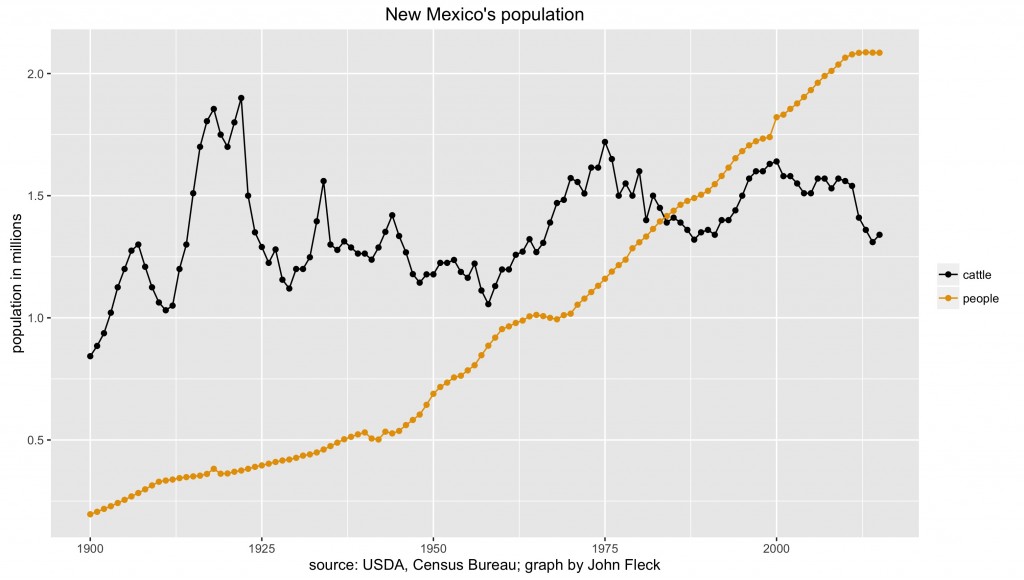Lauren Villagran’s story in this morning’s Albuquerque Journal about the impact of the Boxing Day blizzard on New Mexico dairies is a reminder of the single most important trend in New Mexico agriculture in the last few decades – the remarkable growth of the state’s dairy industry. Some numbers on that below, but it reminded me of a point that one of my UNM Water Resources Program colleagues likes to make about our state’s history: across the 20th century, cattle outnumbered humans until 1984:

New Mexico cattle, New Mexico humans
New Mexico dairy
For much of the state’s history, these were beef cattle, but the dairy industry here exploded beginning in the 1990s, with big industrial-scale operations taking advantage of economies of scale:

New Mexico dairy
At $1.8 billion dollars per year in milk sales, dairy is by far the largest component of our agricultural sector. By comparison the largest single crop type, alfalfa, grossed $264 million in 2014. (source)
The dairy family Lauren interviewed are a good example of the scale involved. They run three dairies near Clovis on New Mexico’s east side, with a total of 10,000 producing cows. We’ve heard a widely quoted figure of 30,000 cows killed by the storm, which would be in the neighborhood of 10 percent of the state’s dairy herd, but Lauren’s story notes that’s just a WAG:
An estimate of 30,000 dead cows, quoted widely in the media, is speculative, said Hagevoort, Idsinga and officials with the Farm Service Agency. It is still too early to tell, Hagevoort said.
“That will tell you the extent of the storm,” he said. “We’re still trying to figure out where we’re at. It’s obvious the losses are extensive.”
a note on data and design: Cattle numbers from USDA’s NASS Quick Stats. Census data via FRED. The strange color scheme on the first graph is the colorblind pallet from Jeffrey Arnold’s excellent ggthemes toolkit for R graphics. I’ll be lecturing a bit in the spring semester on data visualization for the UNM Water Resources students, and I’m experimenting.

Pingback: New Mexico's population history, now with added sheeply goodness - jfleck at inkstain